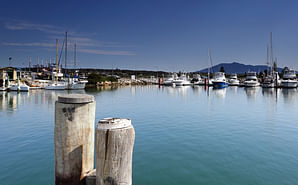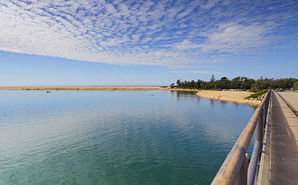- Home
-
Services

Services
Information about Council's regular services and programs.
Airport
Community Services
Environment
- Biodiversity
- Biosecurity and weed management
- Climate Change
- Coast and estuaries
- Environmental programs and partnerships
- Floodplain management
- Pollution incident management
Footpaths and Cycleways
Rates and Charges
Report it
- Abandoned Vehicles and Trailers
- Fish waste recycling bin
- Illegal dumping
- Lost, damaged or stolen bin
- Make a suggestion
- Overflowing Public Litter Bins
- Overgrown land or properties
- Public Liability incident report
- Report an issue
- Streetlight faults
Roads and Parking
Vegetation Management
-
Community

Community
Information about Council's community initiatives and support.
Animals and Pets
- Barking dogs
- Breeders Responsibilities - Dogs & Cats
- Dog walking areas
- Keeping animals
- Ranger Services
- Report a missing pet
- Animals for rehoming
Arts and Culture
- South East Centre for Contemporary Art (SECCA)
- Filming and photography in the shire
- Arts and Culture plan
Bushfire Planning and Recovery
- Coolagolite Bushfire Recovery
- Bushfire Risk Management
- Community Recovery and Rebuilding
- Plan and Prepare
- Emergency Planning - People Living with Disability
Citizenship
Community Support
Events
Grants and Funding
- Council Community Grants
- Funding finder
- Letters of support
- Grant - Expression of Interest
- Community grants program variation request
- Community grants program final report
Have your say
- Community Engagement Strategy
- Documents on exhibition
- Development proposals on exhibition
- Lodge a petition with Council
Health and Safety
-
Business

Business
Information about doing business and investing in the shire.
-
Development

Development
Information about Building and Development in the Bega Valley Shire.
Building and Certification
- About inspections
- Book an inspection
- Building and Certification
- Building Code of Australia
- Building steps check list
- Bushfire provisions and safety
- Construction site management
- Fire safety certification
- Insurance information
- Owner builder information
- Principal Certifying Authority
- Safety when renovating
Bushfire Resilient Housing Toolkit
Certificates
Development Applications (DAs)
- Delays to DA assessment times
- Types of DAs
- The DA process - Your guide
- Planning Portal
- Applications on exhibition
- Approved applications
- Make a submission on a DA
- DA Enquiry
Do I need approval?
- Development advice services
- Electric Vehicles
- Exempt and complying development
- Use of Public Land
- Vegetation and tree management
- Tiny homes
- Land use matrix
Planning
-
Council

Council
Information about how Council operates.
About Council
- Contact us
- Customer service charter
- Payments online
- Policies, procedures and delegations
- Our organisation
- Programs and partnerships
Accessing Council Information
Careers at Council
OUR PLACE
Live, work and play in the Bega Valley Shire
The Bega Valley Shire is an inclusive and welcoming community that integrates quality of life, prosperity, sustainable development, and conservation of the environment.
News and Notices
Browse current Council news and notices, or provide us with feedback on current projects via 'Have your say'.
-

Eden High students learn science of sewage treatment
It’s not every day you swap your school desk for a view of a sludge tank, but that’s exactly what 99 Year 8 geography students from Eden Marine High School did on a recent visit to the Merimbula Sewage...
Aug 15, 2025
-

Tura Beach sewer jetting protects system and environment
Bega Valley Shire Council will start sewer jetting works in parts of Tura Beach on Wednesday 13 August to maintain a healthy system and local environment.
Aug 11, 2025
-

ClubGRANTS fund 14 projects across the shire
Bega Valley Shire Council is pleased to announce funding for 14 organisations under the ClubGRANTS program.
Aug 8, 2025
-

Council exhibits first stage of Development Control Plan Review
Bega Valley Shire Council is seeking community feedback on the first stage of a comprehensive review of the Bega Valley Development Control Plan (DCP).
Aug 6, 2025
-

Council endorses two memorandums of understanding
Bega Valley Shire Council agreed to renew two memorandums of understanding (MOUs) at the 23 July Council meeting.
Aug 6, 2025
-

Experience the magic of discovery at National Science Week
This National Science Week (9–17 August), Bega Valley Shire Library is joining forces with the Australian National University (ANU) and a host of science-loving organisations to bring the magic of...
Aug 4, 2025
-
Community consultation for upcoming works on Big Jack Mountain Road
Bega Valley Shire Council invites the community to a consultation session about the next stage of flood restoration works on Big Jack Mountain Road.
Aug 12, 2025
-
Repair works scheduled for Tathra Headland walk
Bega Valley Shire Council advises repair works will be carried out on the lower section of the Tathra Headland walk from Monday 18 August to Thursday 21 August, weather permitting.
Aug 11, 2025
-
Notice of proposed road naming in Bournda
Bega Valley Shire Council announces that the road names Mandeni Drive, Bloodwood Close and Manna Gum Close have been proposed for roads within the Council boundaries.
Aug 11, 2025
-
Merimbula Boardwalk fully reopened
Repair works on the eastern section of the Merimbula Boardwalk are now complete and the entire boardwalk has reopened to the public.
Aug 7, 2025
-
Road resurfacing works scheduled in Eden next week
Bega Valley Shire Council advises road resurfacing works will be carried out on Storey Avenue and Princes Highway, Eden from Tuesday 12 August to Sunday 17 August, weather permitting.
Aug 7, 2025
-
Geotechnical investigation works scheduled for parts of Bega, Jellat Jellat, Mogilla and Verona
Bega Valley Shire Council advises geotechnical investigation works are scheduled for parts of Bega, Jellat Jellat, Mogilla and Verona in the coming weeks, weather permitting.
Aug 6, 2025
-

Help shape the future of our playgrounds!
Bega Valley Shire Council is planning for the future of play in our community - and we want to hear from you!
Jun 30, 2025
-

Aircraft parking fee
Have your say on Council's draft fee for aircraft parking.
Jul 24, 2025
-

Review of Council policies (batch 2 and batch 3)
At its meeting on 23 July 2025, council resolved to review its local policies in batches. This have your say post concerns the review of batch two and batch three of policies.
Jul 24, 2025
-

Code of Meeting Practice
Council is seeking community feedback regarding adoption of its Code of Meeting Practice procedure.
Jul 29, 2025
-

Stage 1 - Comprehensive Development Control Plan (DCP) Review
We are seeking your feedback on the Stage 1 drafts of the Comprehensive Review of the Bega Valley Development Control Plan 2013 (Comprehensive DCP Review).
Aug 6, 2025
-

Development proposals on exhibition
Have your say on applications open for public comment.
Feb 17, 2022

Need a venue?
The Bega Valley Commemorative Civic Centre has a range of room hire options to suit your needs.
Find out more
Our Libraries have more than just books!
Check out what the library has on offer.
Bega, Bermagui, Eden and Tura Marrang.

Funding notification
Don't miss out on funding, register your expression of interest and be notified when a grant becomes available.
Register your details
When do I put my bin out?
Council's free Waste App helps you stay up to date with bin collection days and learn how to recycle more effectively.
Don't have the Waste app? Find it by searching for Bega Valley Waste in your App store or head to the website.
Need a venue?
The Bega Valley Commemorative Civic Centre has a range of room hire options to suit your needs.
Find out more
Our Libraries have more than just books!
Check out what the library has on offer.
Bega, Bermagui, Eden and Tura Marrang.

Funding notification
Don't miss out on funding, register your expression of interest and be notified when a grant becomes available.
Register your details
When do I put my bin out?
Council's free Waste App helps you stay up to date with bin collection days and learn how to recycle more effectively.
Don't have the Waste app? Find it by searching for Bega Valley Waste in your App store or head to the website.
Need a venue?
The Bega Valley Commemorative Civic Centre has a range of room hire options to suit your needs.
Find out more
Our Libraries have more than just books!
Check out what the library has on offer.
Bega, Bermagui, Eden and Tura Marrang.
Our council websites
Contact Us
- 02 6499 2222
- council@begavalley.nsw.gov.au
-
Zingel Place
PO Box 492
Bega NSW 2550 -
Monday to Friday 9.00AM to 4.30PM
Administration building Zingel Place Bega
Australia -
ABN: 26 987 935 332

